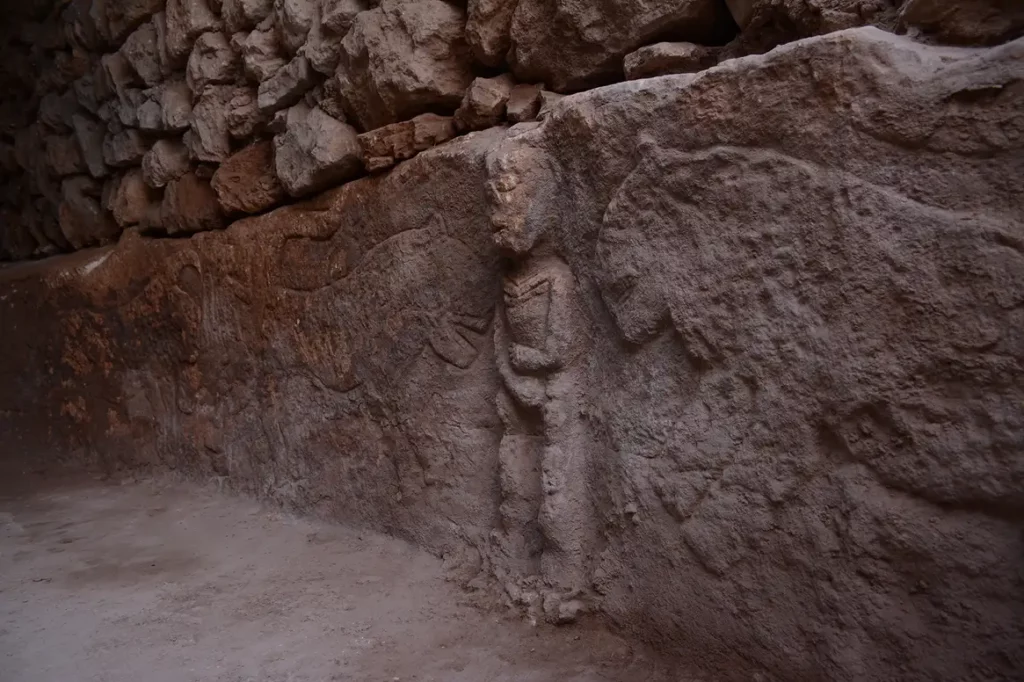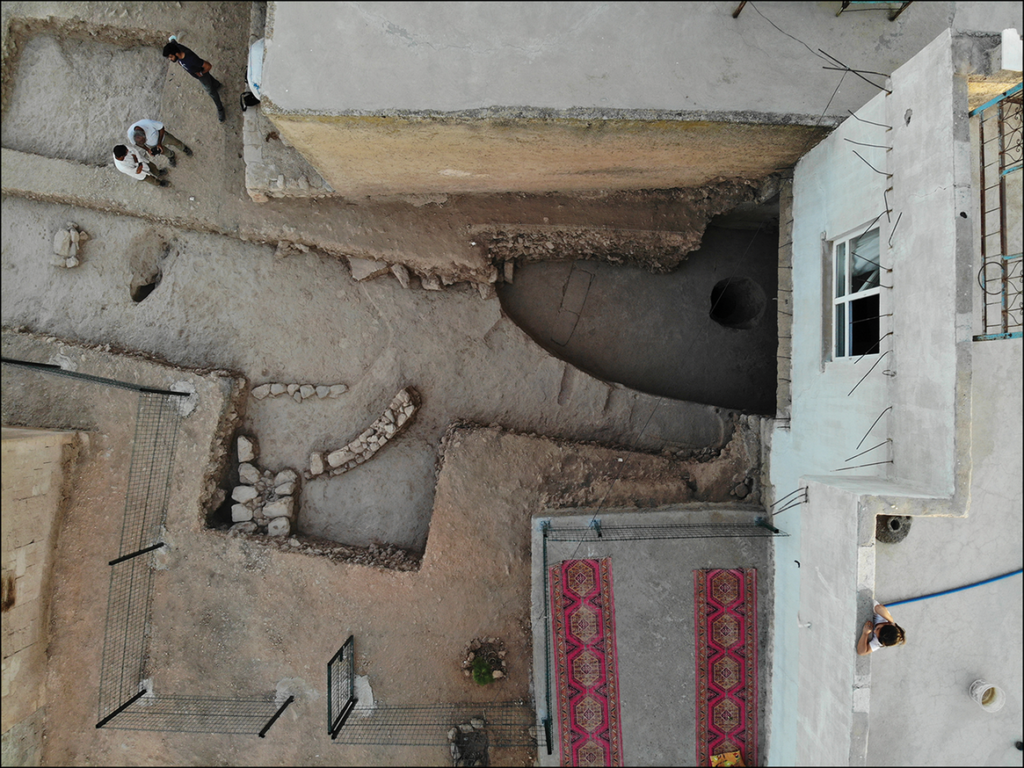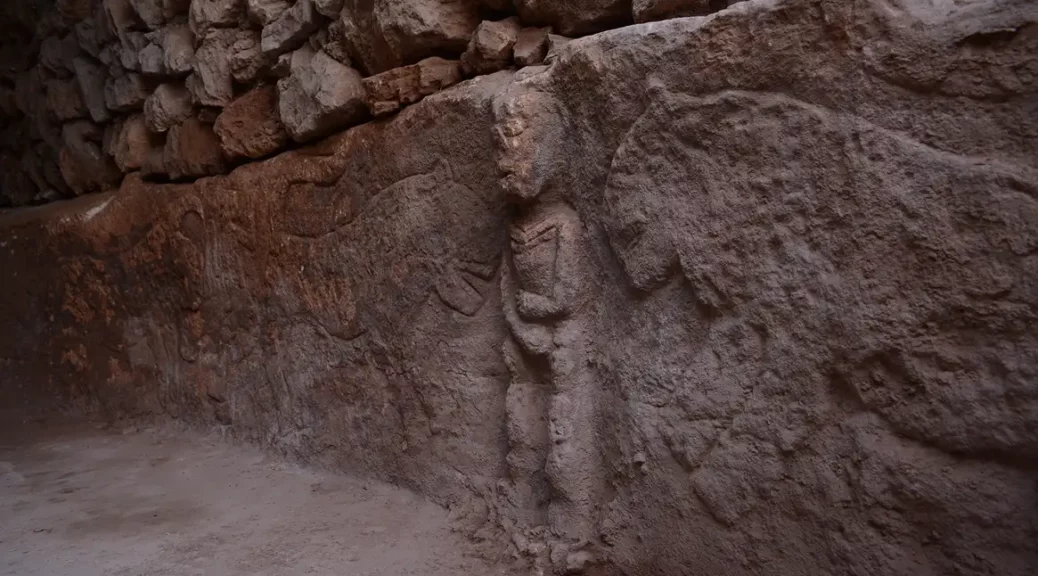11,000-Year-Old Carvings Uncovered in Turkey

In Sayburç, Turkey, not far from the famous settlement of Göbekli Tepe, an archaeologist discovered an 11,000-year-old scene carved into a wall. It’s one of the oldest narrative depictions in the archaeological record.
The narrative scene depicts five figures: two humans, a bull, and two leopards. One of the humans is holding a snake, or rattle, in its right hand.
The other human figure is holding its penis. A full description of the narrative scene, along with interpretations of its meaning for the Neolithic community that created it, is published in Antiquity’s Project Gallery.
“We have very little information about the community where this relief was carved,” said Eylem Özdoğan, an archaeologist at Istanbul University and the study’s sole author, in an email to Gizmodo. According to Özdoğan, researchers are still waiting on radiocarbon dates from the site, but they believe it dates to around the end of Göbekli Tepe—the ninth millennium BCE.
“The communities living in this region share a common cultural environment,” he added. “They certainly communicate with each other and share innovations, social ideology and a common culture.”
The ancient site of Sayburç was mostly covered by the modern town (whose name now applies to the site) in 1949. Excavations began last year and turned up a communal building from the Neolithic period—one wall of which includes the carved artwork. So far, only half the building has been excavated, and some modern structures are slated for demolition so that archaeologists can interrogate more of the Neolithic past.

The scene is not the oldest-known artwork. That honor, like art, is subjective; it depends on what you define as (or what can clearly be identified as) art. A 43,900-year-old painting of a warty pig in Indonesia discovered in 2021 may be the oldest known figurative art piece. In Tibet, a set of children’s’ hand and foot prints discovered in 2018 were dated to between 169,000 and 226,000 years old.
The prints are perhaps more tenuously ‘art’ than the painted pig, but both predate the Sayburç relief by tens of thousands of years. However, neither of those artworks were narrative scenes, or artworks meant to tell a story.
In 2011, archaeologists discovered a 12,250-year-old rock with stenciled depictions of birds and humans. Research published on the limestone etchings in 2019 described it as narrative art, but that conclusion is up for interpretation.

Based on the orientation of the figures, Özdoğan believes there are two scenes depicted in the relief. One features a human and the bull, and the other features a human figure and flanked by two leopards. Both of the humans in the scene are male, based on the apparent phalluses the artists took the time to carve. One of the leopards has a penis, too, but the other does not.
The building in which the narrative scenes were found was communal; benches lined the walls, and the carvings were found on the backrests of the benches. In the paper, Özdoğan notes that the artwork can be considered a reflection of the community’s collective memory, something to uphold its values. What those values were, exactly, might require some more investigation.
Archaeologists won’t know more about the community that lived at Sayburç—beyond its apparent connections to other Neolithic settlements in Anatolia and its style of artwork—until more excavations can be done. But it’s an exciting new twist for our understanding of some of the earliest settlements from the Stone Age.
